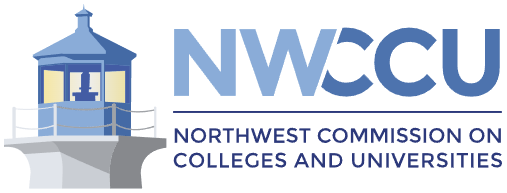EHHD_ED_GR_CTC_AHE_REPORT_2016-17
Annual Assessment Report
Academic Year 2016_17
Department: Education
Program: Adult and Higher Education, College Teaching Certificate
1. What was done?
Three students completed the College Teaching Practicum, which included a formal teaching experience and an academic seminar. There was one EdD student from Art Education, one MEd student from Adult and Higher Education, and one Adjunct Faculty member in Archeology. All three students conducted a classroom research project and presented their findings at the Department of Education’s Annual Research Symposium from 10:30-12:15 on April 26 in the SUB Ballroom 235. There were 23 graduate student presenters from the Department of Education, and over 50 attendees including administrators, faculty, family, and students from across campus and the Bozeman Community.
We currently have 10 active students seeking the College Teaching Certificate. These graduate students are from a cross-section of disciplines including engineering, microbiology, architecture, agriculture, other.
2. What data was collected?
There were five forms of data collected. Each student completed a Classroom Research Project, including a research paper and a scholarly poster. Each paper was comprised of an introduction, statement of problem, classroom research question, literature review, data collection and analysis, findings, conclusions, and recommendations for future practice.
Students also completed a Teaching Philosophy Statement that outlined their beliefs about teaching, student learning, assessment for learning, how to meet the needs of diverse learners, and plans for their future development as a college teacher.
There were two classroom observations recorded for each student. A peer conducted observation, and a faculty member from the student’s discipline conducted a second observation. Rubrics were used to evaluate each assignment, and feedback was provided to students.
In another of the required courses, EDLD 635 College Teaching, students conducted a teacher observation of an exemplary college teacher in their discipline, and each student presented a one-hour teaching session on a chosen topic in College Teaching and Learning and presented the lesson to the class.
3. What was learned?
Students learned how to systematically analyze student learning in their classes. They also learned about how to teach their discipline and to help students through the bottleneck concepts. Finally, students learned more about their beliefs, values, and epistemology of college teaching.
The program learned it was difficult to identify a disciplinary mentor in the students’ field. The feedback from the disciplinary mentor was variable with some mentors providing comprehensive feedback and other mentors providing cursory feedback. Students from the sciences also had a difficult time learning how to conduct social science research in their classrooms. Some students from the sciences were challenged by the quasi-experimental nature of the classroom research and questioned its validity. Some students also felt that teaching in their departments was devalued. Finally, the extent of each students teaching experience varied from being a teaching assistant in a lab, conducting guest lectures, conducting teaching seminars in their departments for other graduate students, and having a more independent teaching assignment in a class.
Student recruiting efforts were limited this past year due to the large EdD and PhD advising load of the program leader. The AHE program has hired a new tenure-track faculty member who can serve as a graduate student chair, which will reduce the number of advisees of the CTC program leader.
4. How we responded?
Greater effort is being taken to identify faculty members in the students’ disciplines who are known to value teaching. One strategy to identify faculty mentors is relying on the faculty mentors who have demonstrated an interest in prior CTC students. To this end, one student is working with their faculty mentor and the CTC program leader to implement a large-scale classroom research project in an undergraduate introductory microbiology course. The project is grounded in cognitive learning theory and aims to help students identify personal and professional relevancy of the course material in order to motivate them, make the content relevant, and aid in long term memory. This research will be written up for publication.
We have also made greater effort to enhance the quality of the student-disciplinary mentor relationship. This has been accomplished through increased interaction. For example, students are expected to meet with their disciplinary mentor once a month to learn more about the disciplinary structure of knowledge in their field and to learn more about concepts that students struggle with most. We have also implemented two classroom observations by each disciplinary mentor--one observation at the start of the semester and a second observation at the end of the semester. We realize the commitment required buy the disciplinary mentor and as a result, we include them as co-chair on the students CTC Program of Study. Finally, students spend additional time in the academic seminar reading classroom research and assessments to help them better understand quasi- experimental research and research on college teaching and student learning in their disciplinary area.
In an effort to recruit more CTC students, the program leader partnered with former CTC students to present at the new graduate student orientation in Aug. 2017. This presentation on neuroscience of learning sparked further interest in the program and it is expected that new students will enter the program this academic year as a result of this recruitment practice. Indeed, two students have already met with the current CTC program leader about enrollment in the program.



